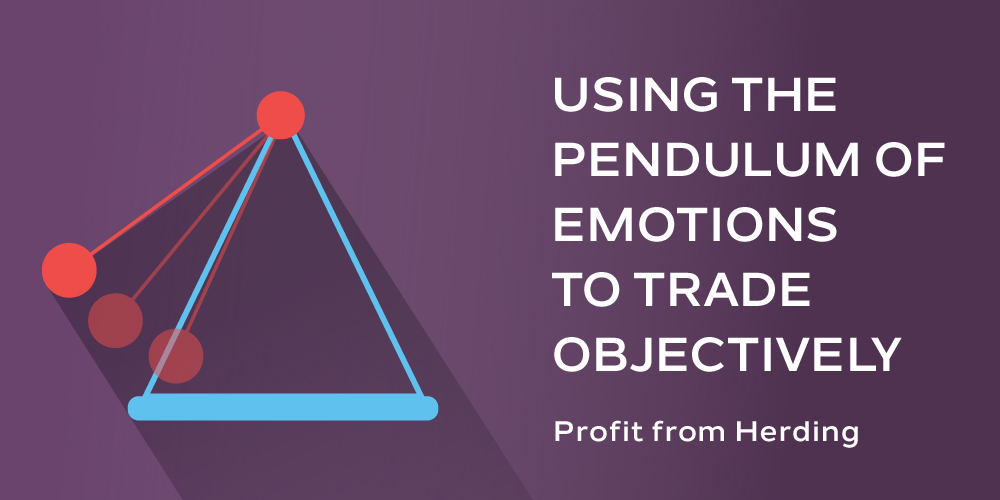
Imagine you’re at your local science museum, or one that you visited on a vacation, and getting to the place where they have that huge pendulum…
The Pendulum as the Basic Driver of Human Behavior
Usually, there’s a crowd of people watching this simplest of phenomena; a weight on a string swinging back and forth. For me, the coolest part was always the moment in time that the pendulum stopped rising, froze in time and space for a millisecond, then began to fall in the opposite direction, until doing the same thing at the other end of the swing zone.
This is so fascinating to people of all age, sex, and nationality because it represents the most basic driver of human behavior; emotions. We as humans swing from love to hate, bull to bear, Hillary to Donald, and even from overbought to oversold, as part of our humanness.
“Herding” – Humans Acting Like Other Humans
What I found, through three decades of not only trading but also training traders and investors, is that humans like to act alongside other humans, in what can be called “herding.” Like a flock of hundreds of birds, all flying in formation, the birds in the middle and back of the flock only turn because the birds at their front and sides turn. Their desire is to stay in the flock.
Humans herd the same way when we invest and trade. Few of us have the clarity to go off on our own and make independent decisions. We ignore new information until it’s no longer new, instead surrounding our consciousness. Then, we integrate it into our “certainty” about price direction. Unfortunately, by the time our consciousness feels safely “herded”, the move is largely over.
Herding in Trading
Sound familiar? How about when the T-Bond futures were recently trading at all-time highs, near 177, in July? So many of us were herding that measures of sentiment reached 95% bullish. Sadly, 177 was a milestone that was reached after a two-month thrust that started around 162. Luckily, our models are tuned to seek these “pendulum” turns as prices are slowing their rise, stalling, then inflecting as they begin their travels to the opposite extreme.
Since then, T-bond prices have fallen sharply in the past four months, and are now as extremely oversold as they were overbought; nearly the exact opposite condition. Instead of our humanness herding at the bullish extreme, we’ve moved from 95% bullish to 96% bearish.
How to Use Herding to Make Objective Moves
Like the emotionality that fooled the herd into buying at the July high, the same (but opposite) mood is fooling the herd into selling here, as prices test the 152’s. The exact high back then was less important than where the pendulum was, just like the exact low here is less important than where it is. The key is to be aware of the pendulum’s position along the path from bullish to bearish extremes, and use the herding behavior of the masses to plan objective actions.
To learn how to structure your trade for a better risk-managed outcome, click here.










